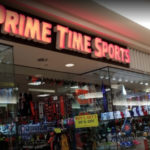Many businesses starting out begin at the stage Michael Gerber, who wrote The E-Myth, called Infancy. In the infancy stage you’re doing everything that you know and didn’t realize you needed to know. You’re putting in 10-16 hour days trying to build your future. Your daily tasks range from taking out the trash and clean up to sales and bookkeeping. It’s very easy to feel overwhelmed at the magnitude of the venture you’ve just undertaken. However, with infancy comes an underutilized advantage, branding your business.
Infancy is one of the best times to establish your brand because it makes everything else you need to do in your business easier because if it doesn’t align with the brand then it doesn’t need to be a part of the business. But let’s try this out and see the difference by taking a business that has a brand and one that doesn’t and see how easier it is to make business decisions to help it grow.
Kitchen and Bath Remodeling
I’m picking on a good friend in this situation, whom we’ll call Steve for the sake of anonymity. He’s amazing at what he does but is also changing the direction of his business to fit his brand. In short, he does kitchen and bath remodeling. Steve’s different from a normal contractor in that he brings artistic vision to his craft. Let’s set the scene. You’re looking to remodel your kitchen and you have a number of options. You can call in an interior designer, head over to Ikea, Lowes, Home Depot or some place similar and let them design it for you. What’s the problem here? They can do it, but the one fundamental flaw they all have is that they only understand one side of the task, the visual side of it. There is a big difference in designing it and building it. While building the design you can encounter issues with pipes, structure and other issues that will affect the outcome. However when you bring in Steve he understands both sides and as a result can still achieve the desired aesthetic while understanding the constructive constraints.
Currently, he’s doing this for homeowners. However, Steve’s personal goals don’t completely align with the current business direction. As I mentioned in the first official post on the Seize the Brand blog, our businesses are supposed to give us the freedom to achieve life goals. Having a brand is the foundation for that.
Reverse Engineering Your Brand
Age catches up to all of us. This is especially so with those in the trades. That kind of work takes a tremendous toll on your body. If you’re doing both the physical work and growing the business your body will cause you to face a choice sooner or later. That choice is close the business, sell it or scale it because you simply can’t do it all for the rest of your life. Steve is no different. He understood this, but his personal goals didn’t align with scaling the business, it’s not large enough to sell and he’s not ready to close it. However he has a skillset that solves a problem for a large enough audience, which doesn’t require physical labor. As a result, he can still do the work as a consultative soloprenuer.
As business owners we spend so much time trying to get past the gatekeepers of our potential clients. Why don’t you do yourself a favor and brand your business so it becomes a gatekeeper for you too.
Choosing Your Target Audience
Steve’s so good that almost all his work comes via recommendation. Yes, that is the best form of advertising, but should never be your only form of advertising. Were he to scale the business and bring in others he’d have to do more marketing because of his increased overhead. But, his target audience is too large. He’d have to market to every single homeowner in his area which can easily reach hundreds of thousands of people. Fortunately, Steve monitors everything in his business and looked closer at his highest paying gigs and saw a trend he could capitalize on. These were higher valued homes where his clients valued his expertise. These were people accustomed to working with designers and let them leverage their expertise to make their homes the talk of the town. Thus a primary and secondary niche target was born. Designers, since they don’t understand the construction size of the business and homeowners that wants high level, detailed work.
Marketing Your Business
As I mentioned, marketing to a large audience is extremely more expensive than marketing to a specific audience. Now all Steve has to do is target owners of high-priced homes and the designers who work with them. A much more specific and subsequently cheaper audience. Essentially, as a business owner you want to be a big fish in a small pond. Having a larger market share in a smaller field is better than having to lower your price and make up for it in volume because the industry is too large and saturated.
Steve wants to have an intentionally small business, which means each project he does, since his time will be limited, has to be large enough to basically fund his life. As we all know, not every person who reaches out to you can pay what you charge. How many leads do you go through before you find one that can pay? What if every person that came to you could pay? That’s the goal we all desire. Steve now has this with his niche target.
Now marketing becomes so much easier because all he has to discuss in his marketing are the problems his niche deals with. Steve could create YouTube videos demonstrating his expertise at work. As people see the homes they can relate and say I have that issue, let me call Steve. On his website, he can feature high-end photography of the homes he works on. Now, his site becomes a gatekeeper because when someone comes across it and sees the large homes they think to themselves, “man these are some expensive homes he works on. I don’t think I can afford him because I know I have a small budget. Let me find someone else I can afford.” Now Steve doesn’t waste precious time finding out this potential lead can’t afford him. As business owners we spend so much time trying to get past the gatekeepers of our potential clients. Why don’t you do yourself a favor and brand your business so it becomes a gatekeeper for you too. Come on, let’s be real here.

We know if we can afford to eat at certain restaurants by the atmosphere they set up. If someone in a polo opens the door to greet you, there are kids everywhere and the atmosphere is filled with colorful booths then chances are you can afford to eat there. However, if you have to take an elevator to get to the restaurant, there is a person in a suit greeting you at the door and there’s gold embellishments everywhere, then you better check your account balance on your app real quick before being seated. Their décor has acted as a gatekeeper for them because they have a brand that a niche target is drawn to. Whereas a chain restaurant is for everyone and the prices are so low that everyone can eat there. Niche restaurants don’t need the same volume to make the same amount because their brand allows them to charge more. In fact, they usually give you smaller plate portions, because you’re not just paying for the food, you’re paying for the brand experience. When your business is branded you can also raise your prices and don’t need volume to stay afloat. That’s Steve’s direction. As you do that then bringing in the right staff becomes easier too.
Hiring the Right Employees
When you have a brand then you’re not just looking to hire warm bodies, you’re hiring the right person that fits your brand culture. A business that has a high employee turnover isn’t leveraging the power of their brand. Those are the kind of businesses that have 2 star reviews and people are frequently frustrated that the staff isn’t knowledgeable enough to assist them. That’s because these people are not right for the brand. Let’s take the difference in Walmart and BestBuy.
Both sell electronics and you go and ask someone at Walmart which is the best flat screen TV to buy. They will simply state these are the ones on sale and these are the sizes available. Frustrated, you just say OK look over at the plethora of TVs and walk away. Then you walk into BestBuy and ask the same question and they respond by asking you some questions. What are you using it for? What’s important to you, connectivity or picture quality? They ask several other questions. Now that they have an idea of your desires for the TV they lead you to a specific area of the TV section and discuss the details of each option they know will fit what you want. Why the difference? Because Walmart’s brand requires warm bodies and BestBuy’s brand requires expertise. BestBuy wants employees that can be trained to be experts on how the products can fit the varied lives of their customers. Such training requires people with specific traits and skills and allows them to weed out potentials that don’t fit the brand. While Steve desires to be a soloprenuer were he to hire he’d have a culture he knew would only be a good fit for specific employees. It would be easier to find that person once he creates the next part of brand development.
Creating Systems
In short, a system allows you to replace yourself with yourself. If you want to free yourself from having to be physically present for the business to make money then having systems is a requirement. A system also allows you deliver the same result your clients expect every single time they do business with you because that’s what they expect. Creating systems accomplishes both goals; you document the process you undertake to deliver the experience your clients want from you. Now that it’s documented you can find the right person that can be trained on it and they in time become you. They bring your level of expertise to the task because you’ve trained them on how you would do it. Now that they can do the tasks that run your business you can spend your time doing your real job and that is growing your business. In time you document that which becomes your sales system and bring in the right person who can sell as if they were you, because they will be. Now you’re free to do other things you want in life knowing your business will still run and grow without you being physically present all the time. This allows you to maximize what you can get for your business should you decide to cash in.
Selling Your Business
Even though Steve is a solo business, with documented systems wrapped in a brand he’ll have several options that will allow him to exit his business on his terms. His brand is now a turnkey solution. This is why people buy franchises rather than businesses because they are turnkey solutions. Everything to run the business and leverage the brand is documented and all an investor has to do is follow the systems and he will be profitable from day one. This is why franchises have such high buy-ins. You’re not just buying a business; you’re buying a verifiable, documented brand. Even if Steve didn’t want to sell, he has systems that he could turn into educational products others in his field could buy thus creating a passive income that could very well eclipse the service portion of his business.
Everything you have to do to run and grow your business becomes easier if it’s a brand. Branding takes time and it’s better to start now and refine as you grow then to grow then to hit a plateau that could cause your business to crumble.





